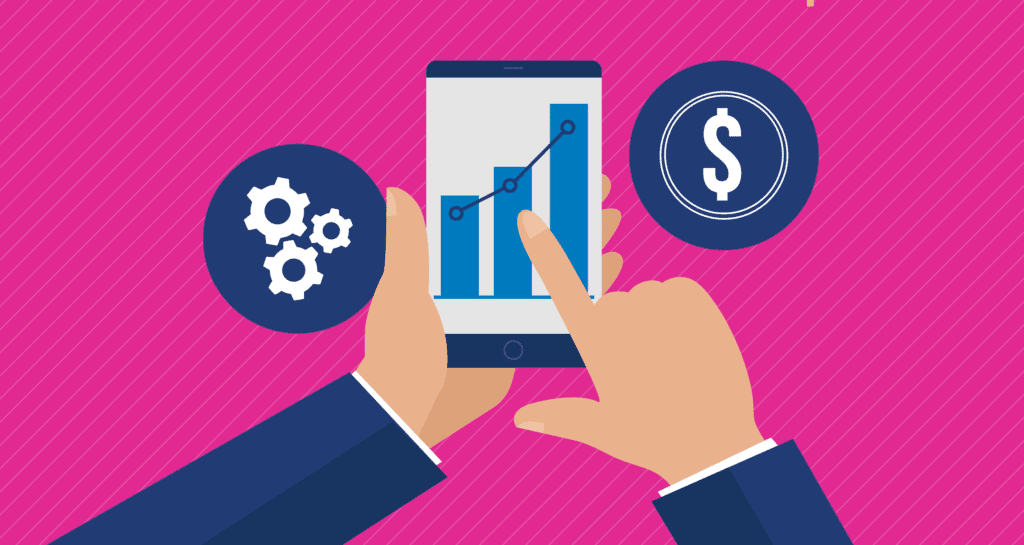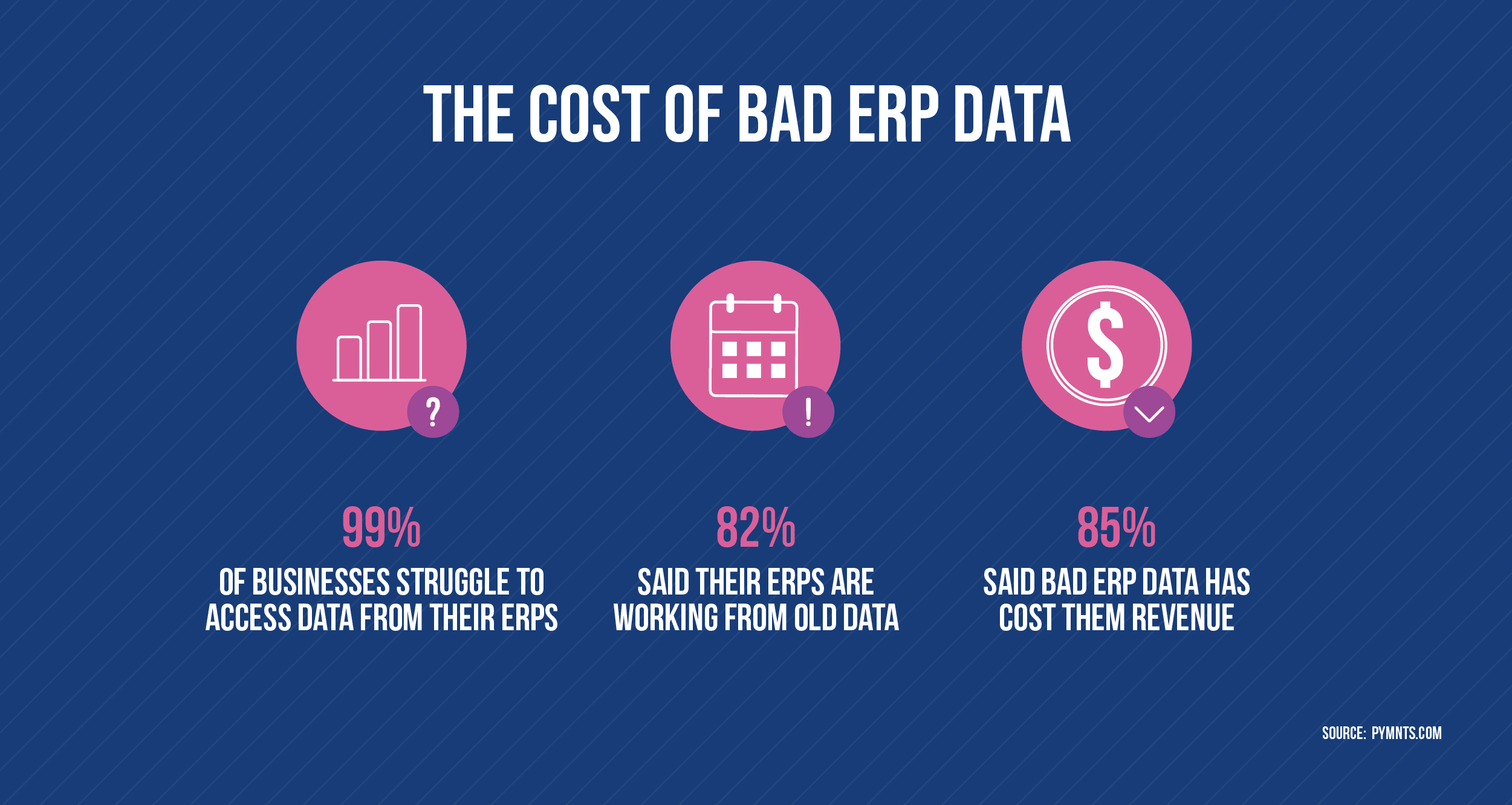How to Choose the Best AP Integration for Your ERP

An Enterprise Resource Planning (ERP) system is a solid investment for most companies. The best ERPs streamline and optimize accounting, finance, HR, purchasing, and other core business functions, but there’s one key function where they fall short – accounts payable.
ERPs boast an impressive track record for the digital transformation of business processes. In an August 2022 survey by PYMNTS.com, 95% of enterprise CFOs said implementing an ERP improved their business processes. In a 2019 survey, 82% of businesses said their ERP implementation achieved target ROI.
ERPs excel at rules-driven functions such as accounting or inventory management, but they aren’t designed to handle complex and less-structured accounts payable tasks such as invoice processing. Accounts payable functions often fall outside the ERP, which means that AP departments rely on manual processes to update the ERP with transaction data. These manual processes are slow and error-prone, so they don’t provide accurate and timely data to the ERP. As a result, the ERP doesn’t have the data it needs to do its job.

There’s a better approach. Many businesses are integrating automated accounts payable solutions with their ERP. AP automation streamlines and manages complex AP tasks like invoice processing and integrates with the ERP to share accurate, real-time data. This approach lets the ERP do what it does best – share information and boost process efficiency across the organization.
In this podcast episode, Ryan Myers, CFO of America’s Thrift Stores, explains how ERP integrations can add value and increase productivity. Finding the AP automation platform that provides the best ROI, simplest implementation, and most seamless data integration with your ERP will save time and sharply reduce error rates. Read on to learn how to find the ideal solution for your business.
How AP to ERP System Integration Works
AP to ERP integration lets your ERP act as a single source of truth for transaction data across your organization and provide transparency across the procure-to-pay process. Integration reduces human error and late or missed payments, improves invoice verification and reconciliation, strengthens supplier relationships, and provides support for payment systems.
Seamless data transfer between the AP automation system and the ERP is crucial. The type of integration is usually determined by whether the ERP system is cloud-based or on-premise. Cloud-based platforms support application programming interface (API) integration that AP teams can easily implement without IT support. On-premise ERP systems typically require file integration using customized file templates to import or export data.
Integration boosts process efficiency and improves the ROI of your ERP system by automating and optimizing core business tasks, including:
Invoice Data Capture and Management
Invoices are automatically scanned and entered into a central database, and all invoice details and line-item data are captured, entered, GL coded, and validated.
Payment Processing
Transaction data, communications, and approval status are automatically shared with payment systems for more efficient and accurate processing.
Invoice Posting
Invoices are automatically uploaded to the ERP after they are entered and verified.
Reporting and Analytics
Real-time transaction data, insight into AP workflows, and approval status are shared with the ERP.
Invoice Workflow
Invoices requiring approval or review are routed to the correct employee based on customizable rules.
Compliance and Controls
Both systems synchronize and enforce internal controls and centralize and verify data to ensure a complete AP audit trail and separation of duties.
Invoice Reconciliation
The AP platform provides accurate invoice and transaction data to the ERP to facilitate real-time invoice reconciliation.
By automating and optimizing these tasks, integrating AP automation and ERP helps businesses reach a much higher level of process efficiency than they’d ever achieved with manual processes.
Benefits of AP & ERP Integration
By streamlining AP processes and sharing accurate, real-time information across the organization, integration helps businesses reduce costs, improve efficiency, and make informed decisions. Here are some of the key benefits your business can realize:
Invoice Processing Cost Savings
Invoice processing is highly labor-intensive and costs most companies over $10 per invoice. Implementing an AP automation solution can reduce this cost to $2 or less.
Quick and Simple Integration with Legacy ERPs
The best AP automation platforms can quickly and seamlessly integrate with most ERP platforms like SAP, NetSuite, Infor, Sage, Oracle, and Microsoft Dynamics without changing existing rules or processes. Businesses can begin realizing benefits almost immediately.
Accurate Invoice and Transactions Data
Invoice data is automatically uploaded to the ERP in real-time without manual keying, ensuring that the data is complete, timely, and accurate across the organization. Accounting staff can easily access the data to resolve errors and exceptions as needed.
Improved Employee Productivity
The Institute of Finance and Management says that AP automation can increase the yearly number of invoices processed by a single employee from 1,350 to 22,756. Along with these efficiency gains, automation and ERP integration also free employees from manual processes to focus on higher-value tasks.
Faster Invoice Approval Process
Automated invoice capture and routing ensure that invoices are never lost, misrouted, or stuck in an inbox. The system notifies approvers when an invoice is ready for approval and sends reminders if necessary. Employees can also check the approval status of an invoice and reroute it to a different approver if needed.
Reduced Errors and Duplicate Invoices
Automatic invoice entry, coding, and verification eliminate duplicate invoices and errors. The AP system detects duplicate invoices and discrepancies and flags them for employee review.
Enhanced Transactions Data and Process Visibility
CFOs and managers can access real-time KPIs, data, analysis, and insights via a visual dashboard to identify trends and bottlenecks and make informed decisions. Many platforms offer mobile capabilities so that decision-makers can access information anytime and anywhere.
Businesses can realize many of these benefits regardless of the business’s legacy ERP platform. However, choosing the right AP automation platform is the key to maximizing the benefits of integration.
How to Choose the Best AP Platform for ERP Integration
Not all AP automation software is created equal. The efficiency and quality of the integration between the AP platform and the legacy ERP system will greatly impact how well things work.
The best AP platforms post data straight through to the ERP with minimal intervention and reliance on manual data entry. Data synchronization improves the efficiency and effectiveness of processes, including approvals, two and three-way matching, duplicate detection, and exceptions management. It also maintains a consistent audit trail across both platforms.
Good integration makes it easier to track documents and approval status and measure the effectiveness of AP workflows. It also ensures that the ERP shares accurate and timely data with other ERP modules and systems across the organization. When you are considering AP platforms, confirm that the platforms you are considering support two-way communication and synchronization with your existing ERP. You should also ask how often data is synchronized and refreshed between systems.
Another important consideration is whether the AP platform supports specific requirements. For example, platforms such as Stampli support custom data fields, integration with multiple ERPs, support for multiple locations, jurisdictions, subsidiaries, or currencies, and integration with accounting systems. With this in mind, choosing the right platform will ensure significant benefits for your business.
Here are some other steps you can take to make it easier to choose the right integration:
Check Online Reviews for Accounts Payable Automation Solutions
Hear what other finance leaders say about the AP automation platforms you’re considering. Software review sites like G2 provide valuable insights and feedback.
Perform An ROI Analysis for Integration
Speak to vendors or other businesses, and read through case studies to understand what ROI you can expect from the integration and on what timeline.
Start a Trial Subscription
Many AP automation platform providers offer a free trial to help you assess whether their solution will work for your business.
Stampli: The Industry Leader in AP to ERP Integration
Stampli is the recognized leader in effortless Accounts Payable to ERP integrations. You can easily configure the flexible Stampli platform to accommodate your specific AP processes to provide seamless integration with your ERP – without the need for IT support or changes to your workflows.
Stampli is named to G2’s Leader Quadrant for Accounts Payable Automation and is rated #1 in Customer Satisfaction.
Maximize ROI on your ERP with Stampli’s industry-leading integration features:

Launch in Weeks, not Months
You can complete most Stampli integrations in days. Read how Beyer Mechanical got up and running with Stampli in 48 hours.

No Change to Your Accounts Payable Processes
Implement Stampli and integrate it with your ERP without changing your existing AP workflows.

No Need for IT Support
Integrate Stampli and begin automating your AP processes without the need for IT support.

Support for Multiple ERPs, Locations, Subsidiaries, and Currencies
Stampli offers complete flexibility to accommodate your organizational structure, no matter where you do business.

Flexible Cloud-Based Platform
Implement Stampli and integrate it with your ERP without additional hardware, and access your AP workflows and data from anywhere, anytime.
Take your ERP to the next level by empowering it with Stampli today. Contact us for a free trial.
